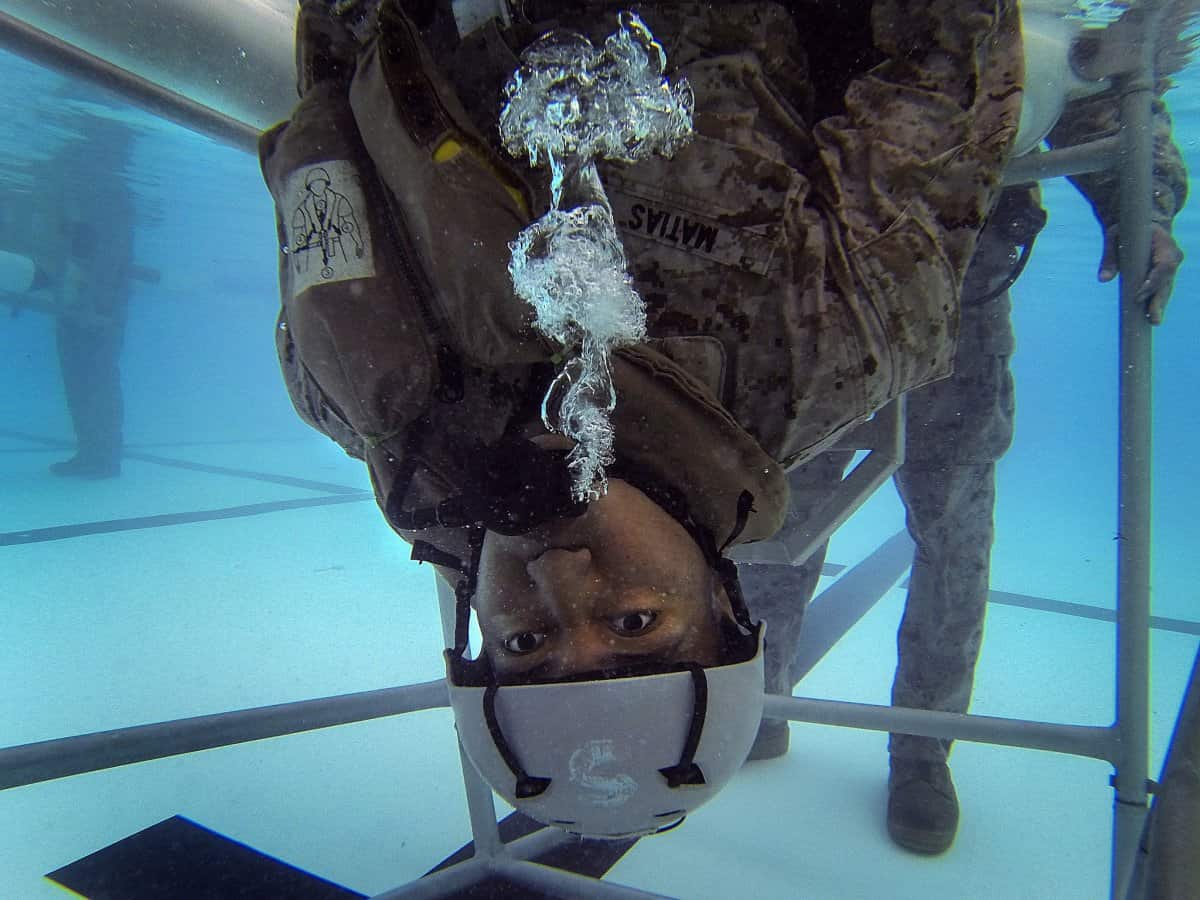*This post may contain affiliate links. As an Amazon Associate we earn from qualifying purchases.
There are many things in life we take for granted. Held deeply in the routines and stresses of daily life, we often forget to realize that shelter, the clothes on our backs, the soft beds we rest in every night, even the air in our lungs, are gifts. We go our entire lives with a constant supply of air, holding it only during occasional swims or during moments of intense stress. However, there are major benefits to holding your breath longer. We will explore the benefits that come with regular induced hypoxia, how to hold your breath longer, and some considerations to make if you decide to train your breath-holding technique.
Benefits of Holding Your Breath
Overcoming this physiological barrier has been of great service to our ancestors throughout the millennia, but few of us have a necessity to hold our breath for prolonged periods. There are several health benefits from holding your breath longer. You do not have to go into the water to reap them, in fact, we recommend that you do so on land. Before you learn how to hold your breath longer, let’s go over some benefits of this practice.
Cardiovascular Health

Training the breath improves the health of our hearts and blood vessels in several ways. First, by creating a hypoxic environment, the kidneys release more of a hormone called erythropoietin, or EPO. This hormone increases the number of red blood cells in circulation, increasing the oxygen-carrying capacity of the blood.
Second, it stimulates vasogenesis, or the formation of new blood vessels, particularly in the heart. This can help to create coronary collaterals, safeguards in the event a blood vessel is blocked by an embolism. This significantly reduces the risk of a heart attack and minimizes the damage should an infraction occur.
Last, it increases the synthesis of nitric oxide synthase, an enzyme that creates nitric oxide. Nitric oxide is a powerful vasodilator, increasing blood flow to the peripheral tissues. Elevation of nitric oxide can help with athletic performance, decrease the risk of a heart attack and stroke, and increase blood flow to erectile tissues like the penis and clitoris, enhancing the sexual experience.
Reduces Inflammation

Inducing a hypoxic environment has a powerful anti-inflammatory effect on the body. Americans are particularly at risk for systemic inflammation, and if you suffer from an autoimmune disease like rheumatoid arthritis or ulcerative colitis, it can have an immense impact on well-being. Yet another great reason to learn how to hold your breath longer.
Memory and Cognitive Function

Society has never demanded more from us as individuals, and the thriving nootropic market is a clear indicator of this. We are pressured to be top performers at work, encouraged to pursue a side hustle, all while maintaining a vibrant social or family life while trying to find time to pursue our own passions and interests. You need not spend money on expensive supplements or develop an Adderall habit as you always have a tool at your disposal that is free and can act in a matter of minutes.
A cycle of Wim Hof breathing, which we will discuss later, can help give you a boost of energy and cognitive performance. This occurs by increasing blood flow to the brain and providing more oxygen-rich blood. Over time, this will increase long-term cognitive and memory performance by stimulating the formation of new blood vessels and the release of stem cells. The release of stem cells will help to form new brain cells, particularly in the hippocampus, the area of the brain most closely associated with learning and memory.
Stem cells thrive in a hypoxic environment, which is one reason they are so abundant in fetal circulation. Certain sites within the body, like the bone marrow, provide ideal environments for these stem cells. Once the blood becomes deoxygenated, they can thrive in circulation and go all over the body, including the brain.
Reduced Cancer Risk

Creating a hypoxic environment promotes a powerful tumor suppressor gene called p53. This gene is an important regulator in the cell cycle, whose job it is to prevent mutations that can lead to tumor formation. Its role in tumor suppression is so powerful that it has been coined the “guardian of the genome”.
Slower Progression of Neurodegenerative Diseases

Due to the increased circulation and stem cell release induced by hypoxia, learning to hold your breath longer can slow the progression of diseases such as Alzheimer’s, Parkinson’s, and dementia. The increase in stem cells and oxygen-rich blood protects brain cells from death and can help to preserve memory in patients with dementia or Alzheimer’s, and rescue the critical dopaminergic cells that are at risk in Parkinson’s disease. Keep in mind that this is not a cure and that the benefits achieved depends on the individual.
Emergency Situations

It is unlikely that any of us will ever be in a scenario where iron lungs can be the difference between life and death, but the fact is that it happens. Fire deaths are primarily from suffocation as the fire consumes all available oxygen and throws pollutants into the air. In the event that you are thrown overboard during a storm or experience a water-landing while traveling by plane, an extra minute to your breath hold can be the difference between salvation or a watery grave. Hope for the best, prepare for the worst by learning how to hold your breath longer.
How to Hold Your Breath Longer
Now that we know of some benefits of hypoxia, it’s time to begin the training. Here are techniques that will help you become master of the breath.
Do Not Hyperventilate

Hyperventilation seems like an intuitive way to increase your breath-hold time, but a quick physiology lesson will negate this as a solution. The body measures its need to breathe not based on the availability of oxygen, but rather on the amount of carbon dioxide dissolved in the blood. The nature of hemoglobin makes it to where circulating blood is 98-99% saturated with oxygen, so hyperventilation does not greatly contribute to hyper-oxygenation.
What it does is reduce the amount of carbon dioxide, so you may become hypoxic without even realizing it, all while eliminating the drive to breathe. This can lead to blackouts and nerve cell death.
Understand Physiology

Breathing is primarily an unconscious process, and when we aren’t thinking about it, our breath is shallow and quick. The first step in learning how to hold your breath longer is to learn how to take a proper, deep breath. The diaphragm is the muscle of respiration. When you inhale, it flattens out, expanding the chest cavity and creating negative pressure, allowing fresh air from outside to enter the lungs.
When taking a full, deep breath, the shoulders should be the last thing to rise. Sit upright with good posture and breathe into your belly and lower back. As those fill up, feel your shoulders expand and upper back pull apart. When you can’t breathe in anymore, expel all the air in your lungs, contracting your abdominal muscles. You should feel hollow inside.
There’s another trick you can use as a mental aid when trying to hold your breath longer. You’ll notice that the first 30 seconds go pretty smoothly, but 45 seconds to 1 minute becomes uncomfortable. As you approach the 90-second mark, you might notice that this discomfort is alleviated. This is due to the release of a store of oxygen-rich blood in the spleen. This is a well-documented mechanism across mammalian species, and aquatic mammals like seals and dolphins make use of this “biological scuba tank.”
The Wim Hof Method

Wim Hof has been a tremendous influence in bringing the power of breath to global awareness. His feats of climbing Mount Everest in nothing but a pair of shorts, maintaining his body temperature for hours while encased in ice, and other superhuman acts have provided irrefutable proof of the immense capability of the human body with the breath as the key. The Wim Hof method is a series of rapid breaths followed by longer and longer periods of breath holding. You can find more information on Wim’s website https://www.wimhofmethod.com/.
Use Static Apnea Tables

This is what deep-sea divers use to help their bodies adapt to the physiological environment of hypoxia. They are useful tools to help us hold our breath longer, and provide an excellent, safe framework in which to operate. “Static” refers to the fact that, during the exercise, you remain still, as any movement chews through oxygen. There are carbon dioxide and oxygen apnea tables, the former focusing on increasing the amount of carbon dioxide in the blood, the latter aiming to increase the amount of oxygen in the blood. You can find good examples of these tables here: https://www.artofmanliness.com/articles/how-to-hold-your-breath/
Dangers

There are inherent dangers involved in learning how to hold your breath longer. One should be in decent physical condition before attempting any breath hold training. It is a cardiovascular stressor. One should always train in the presence of others, especially when attempting breath holds in the water. Talk to a physician before starting your training.
Conclusion
Learning how to hold your breath longer is a useful skill to have and an important practice to pursue. It has immense benefits to our health, both physical and mental, and can give us vital time in the event of an emergency. Learning how to breathe properly, utilizing our own physiology, and following static apnea tables can help push us to new heights. Use them wisely, and talk to a doctor before beginning to ensure you are healthy enough to practice safely.

